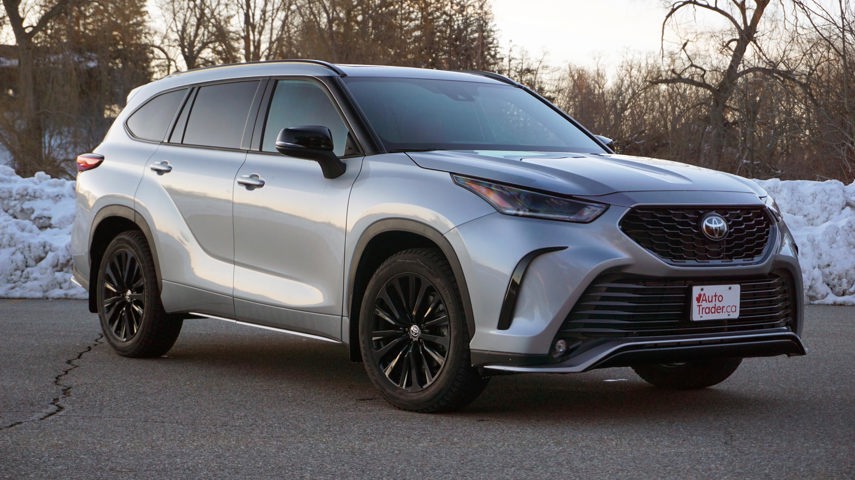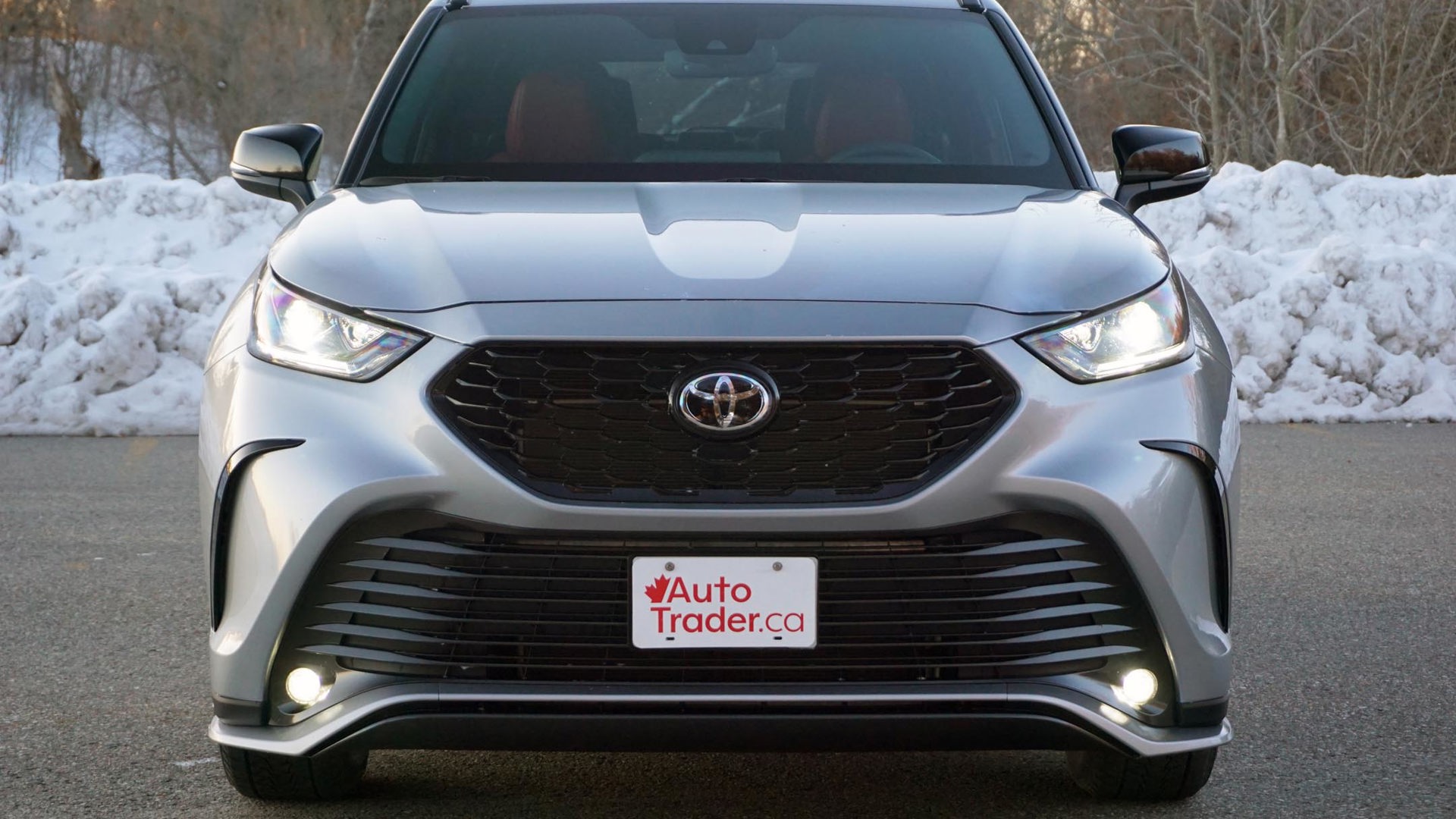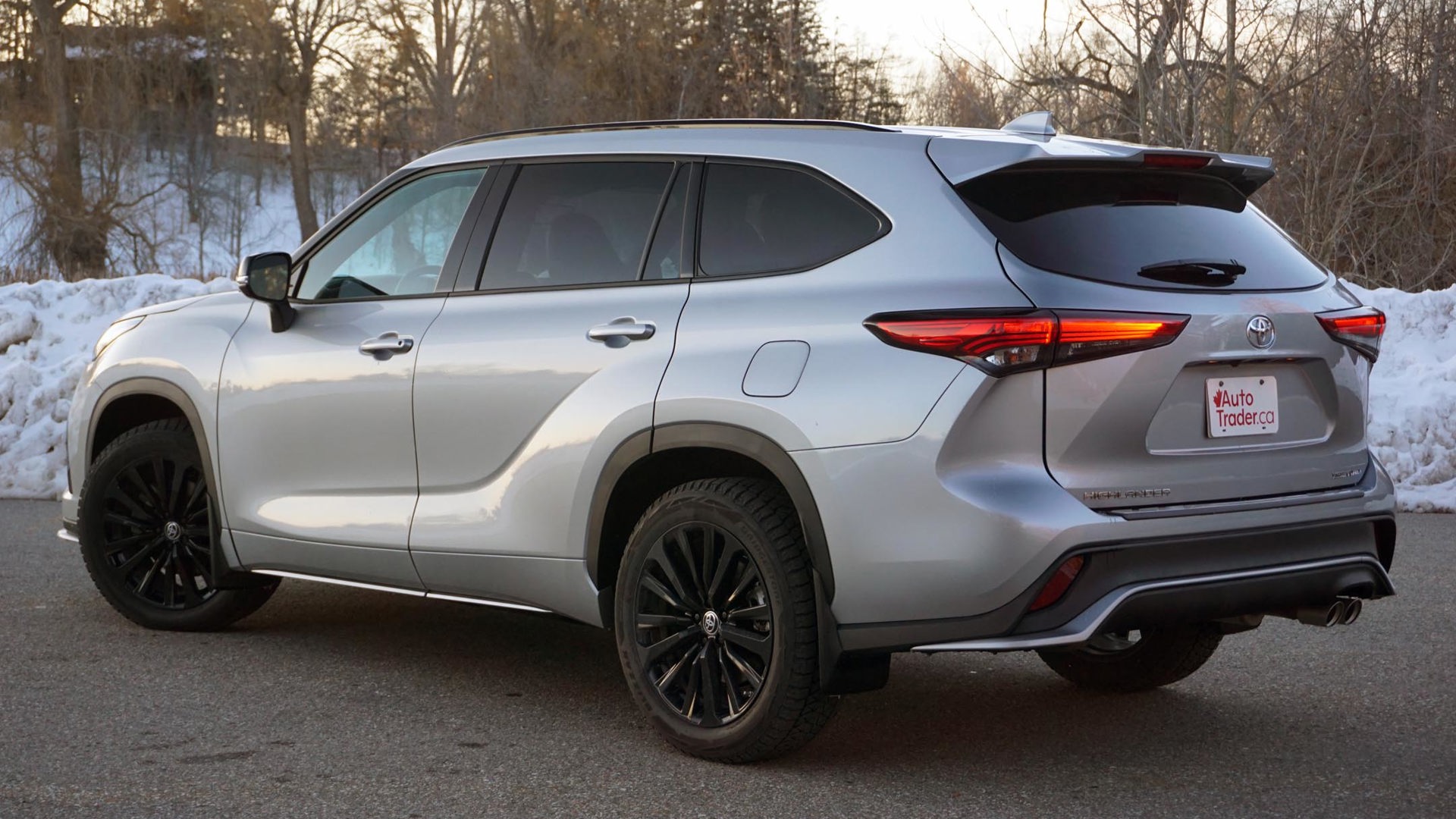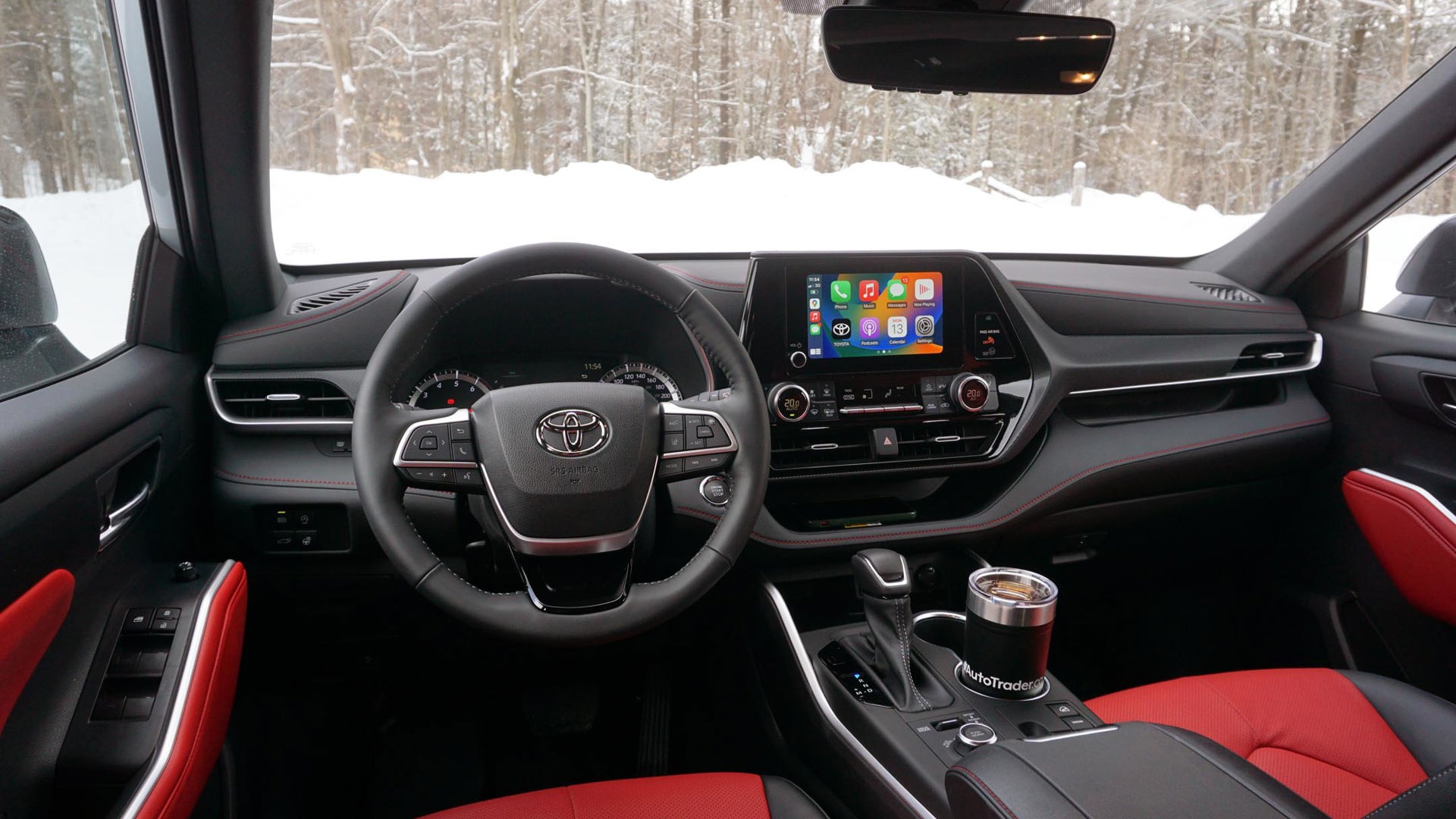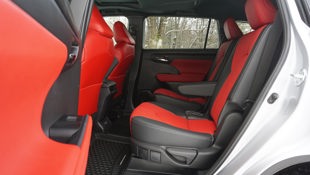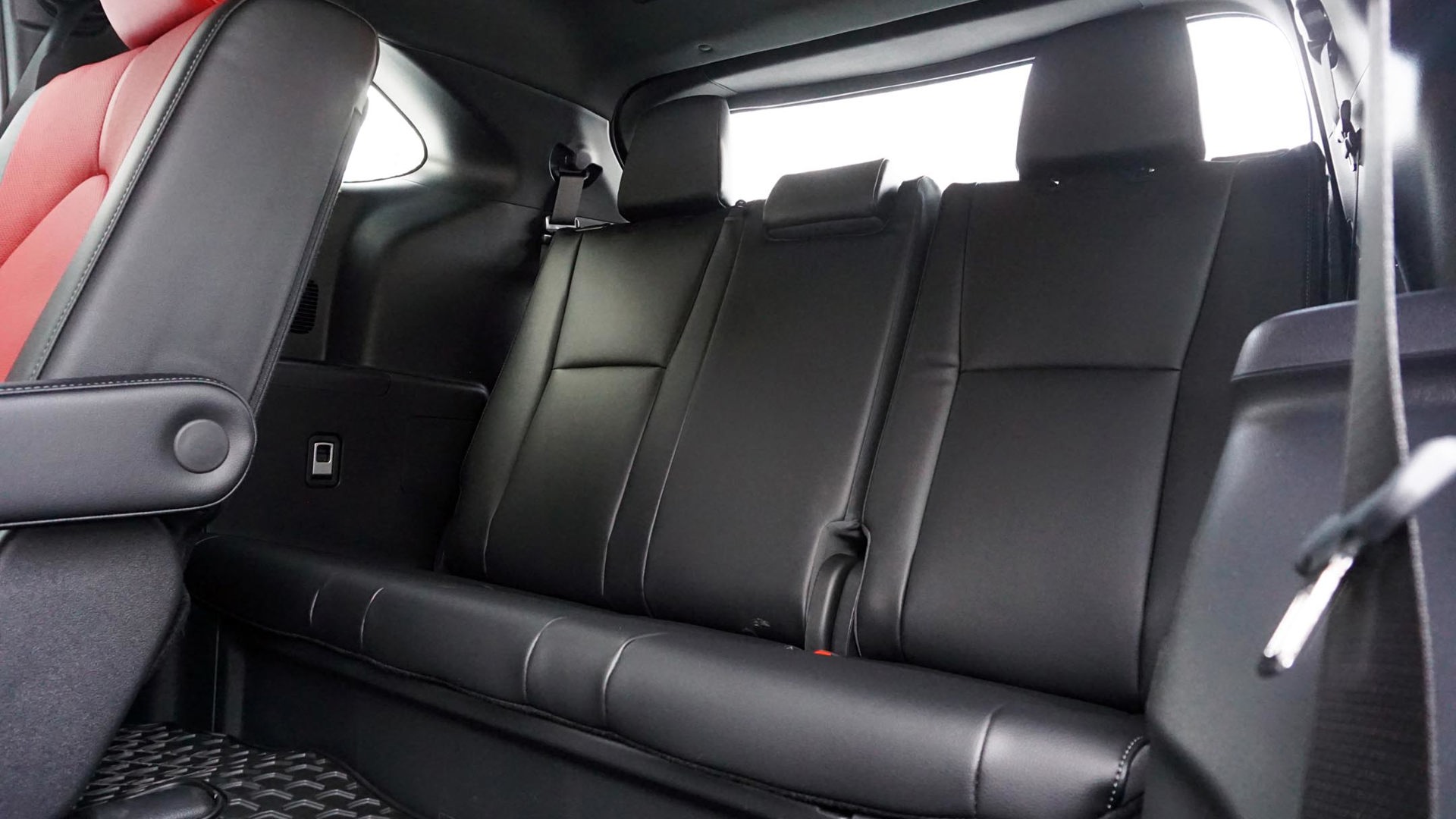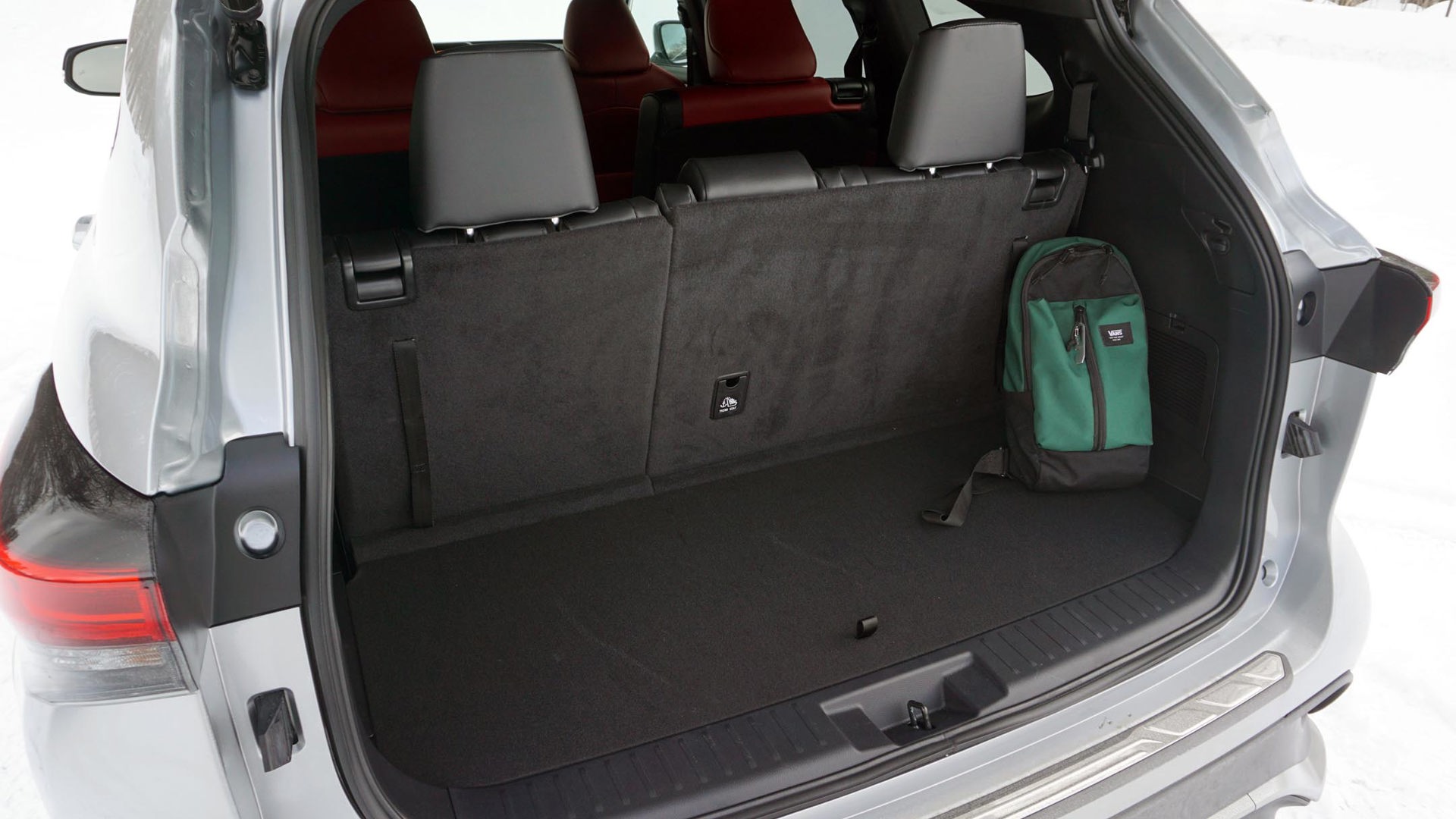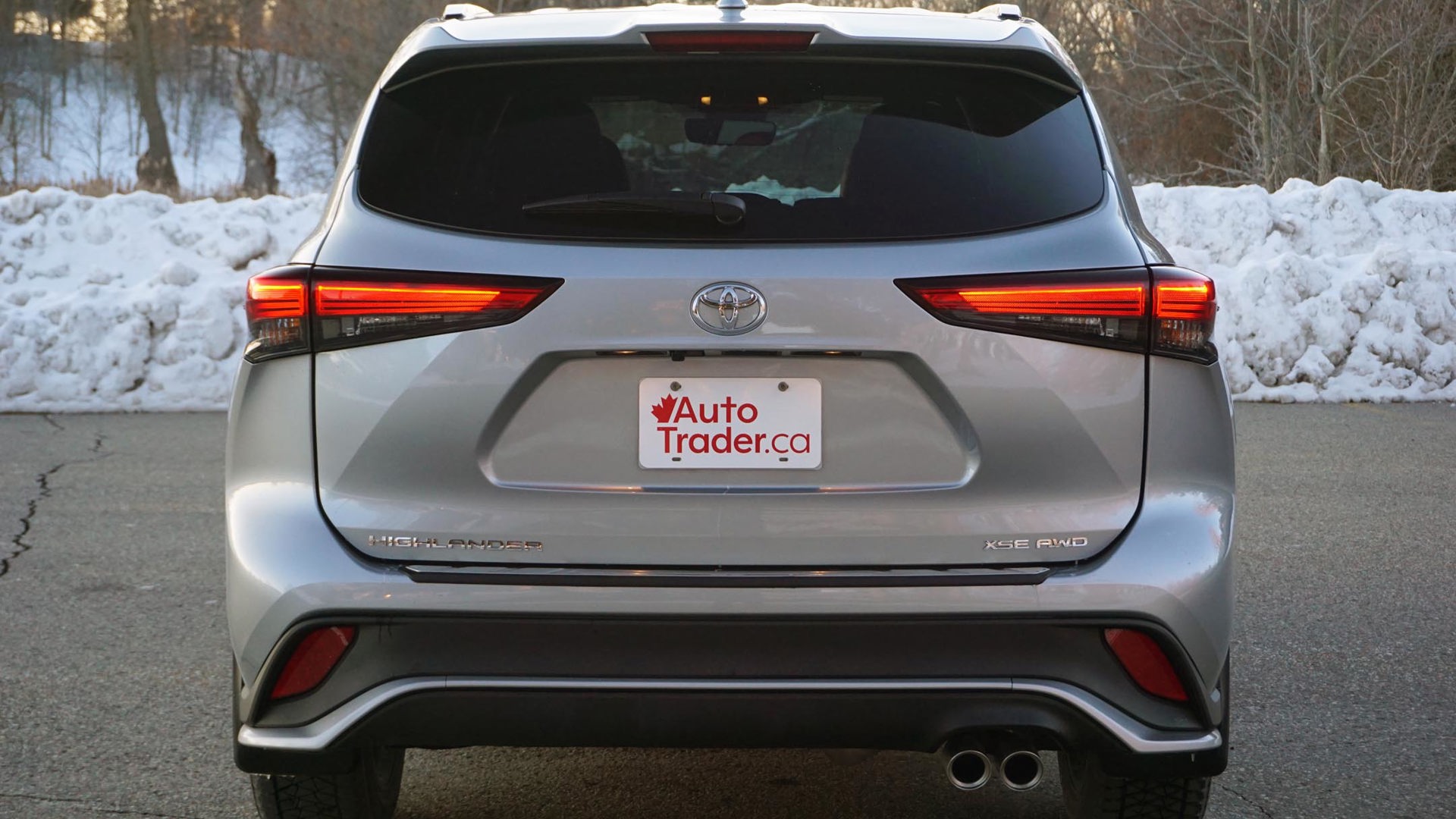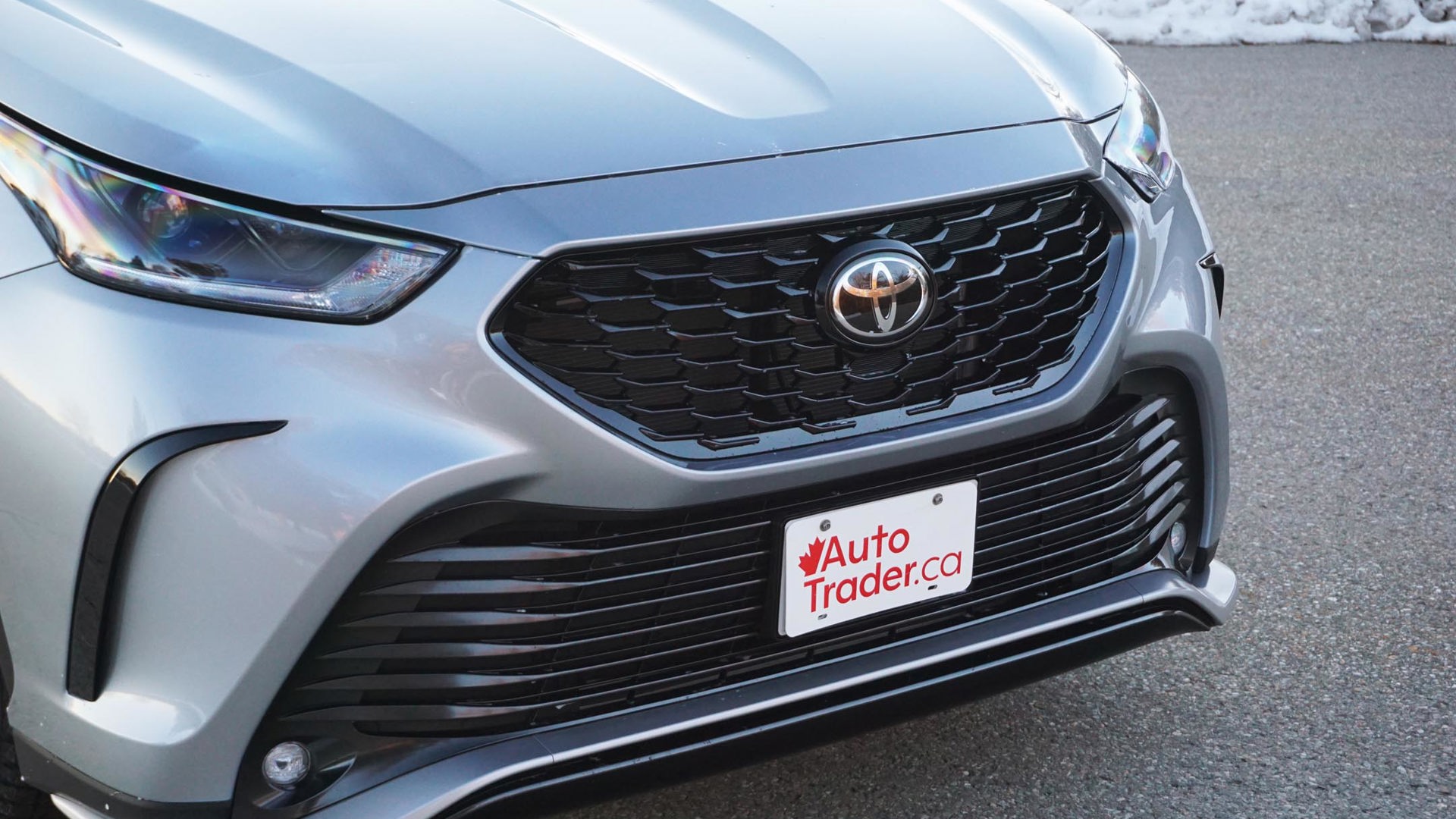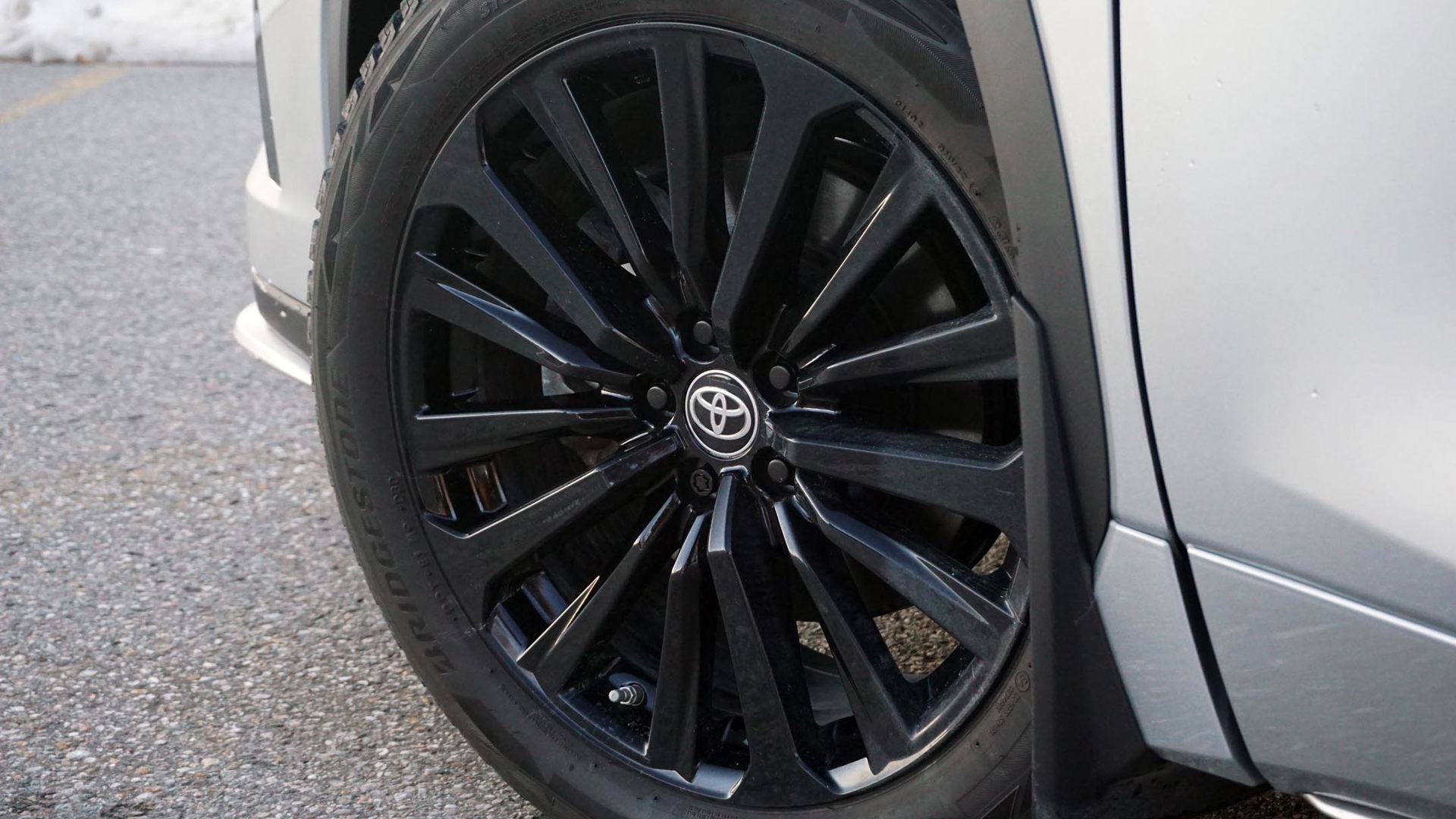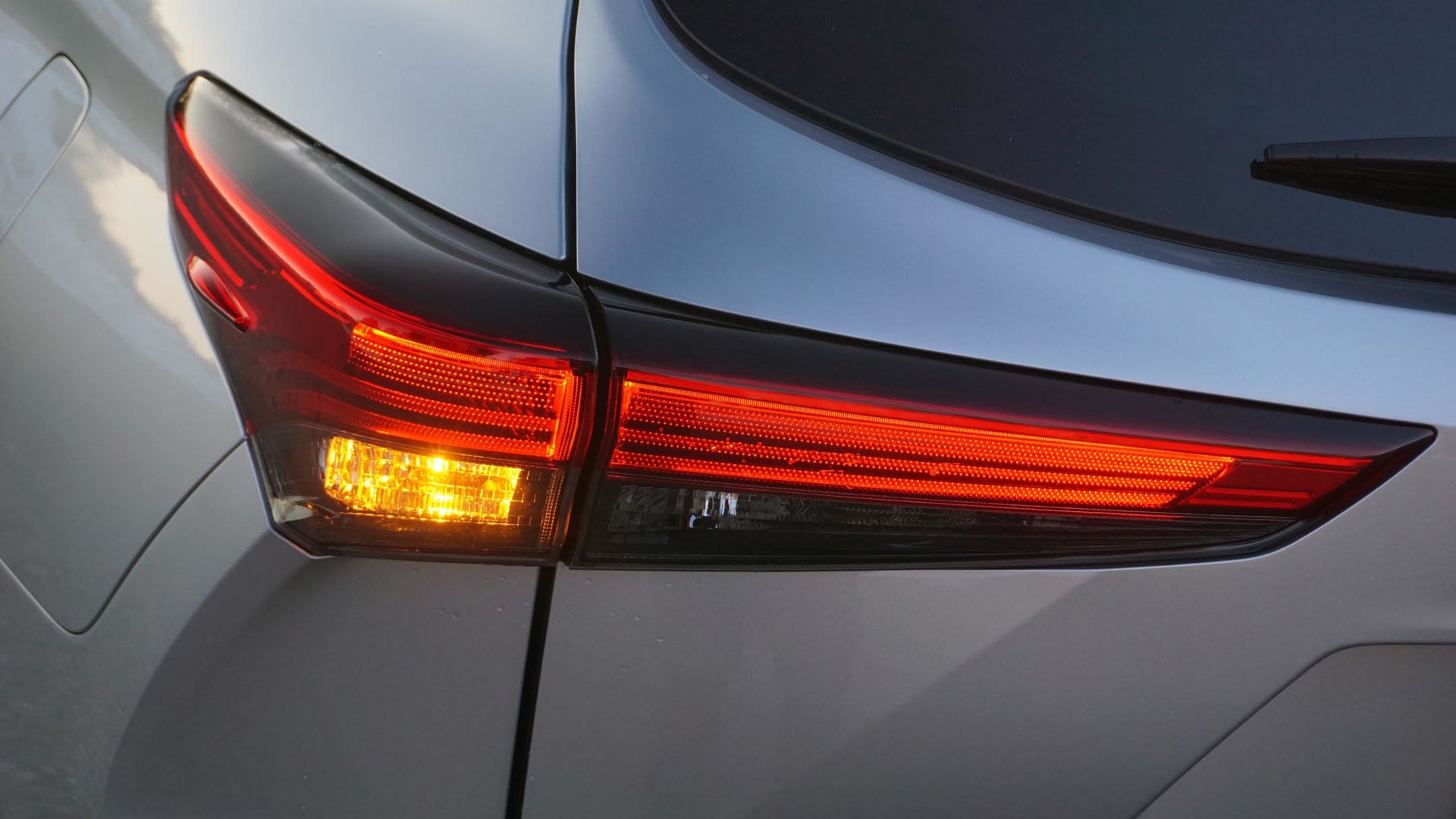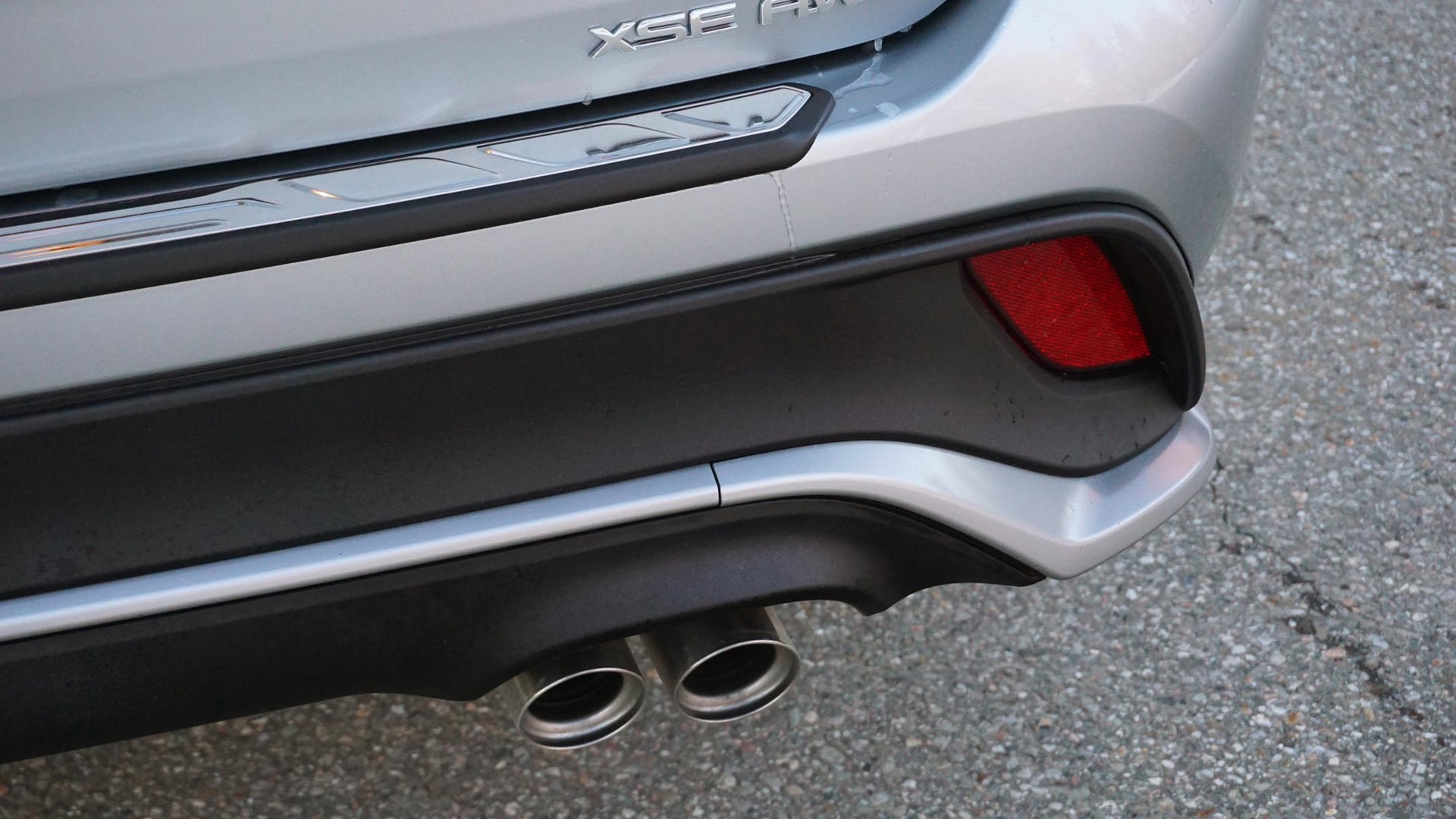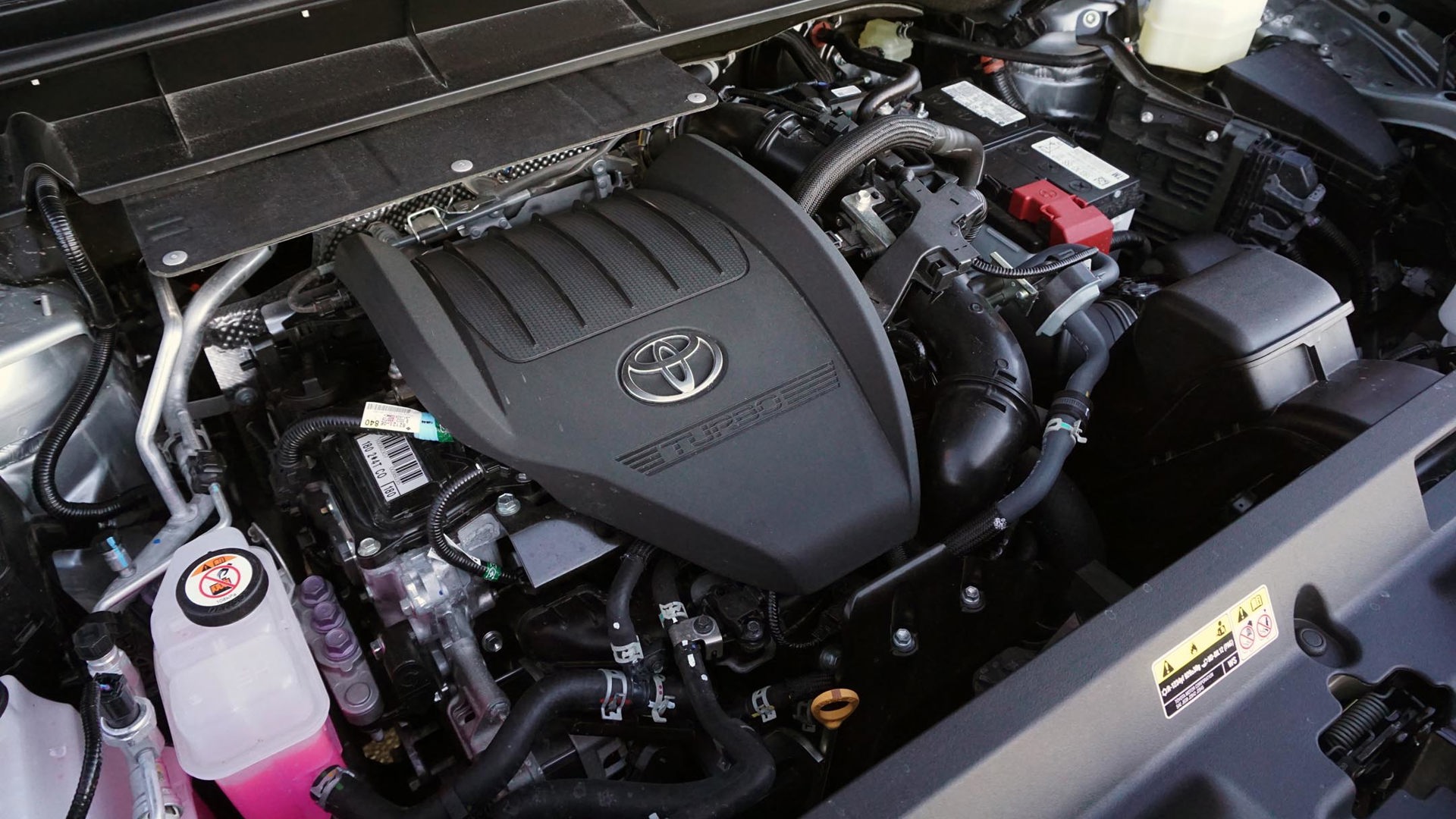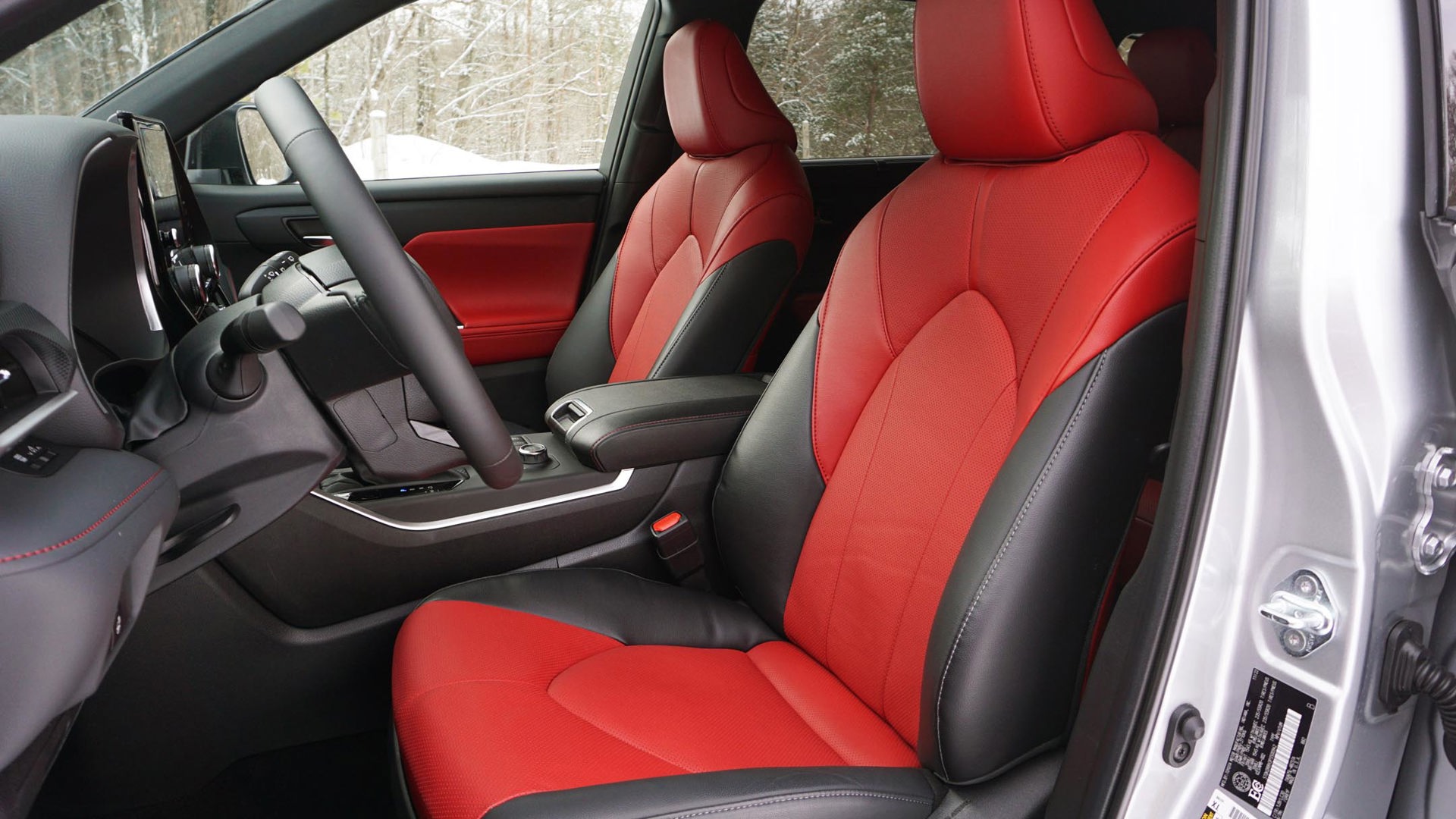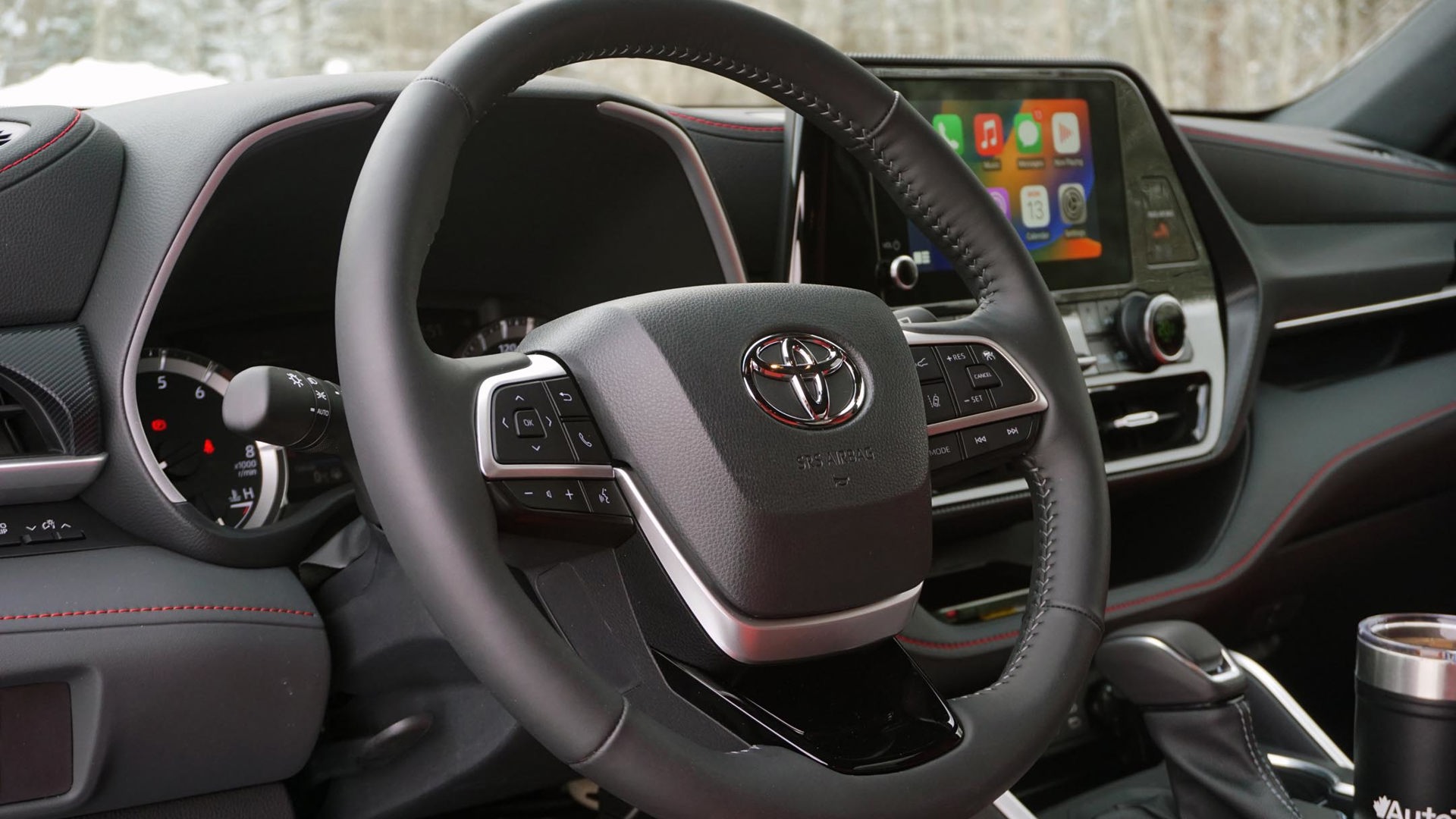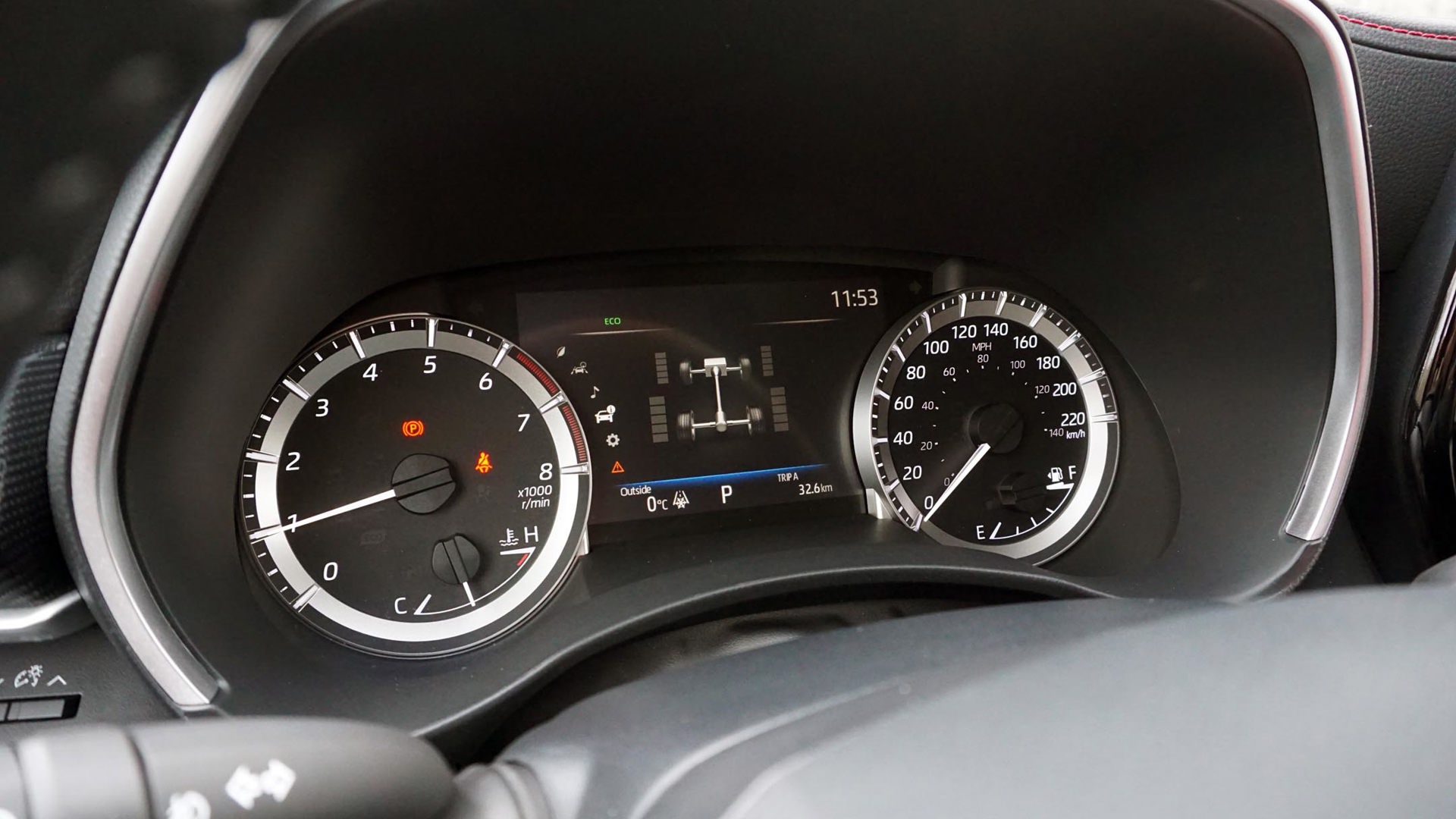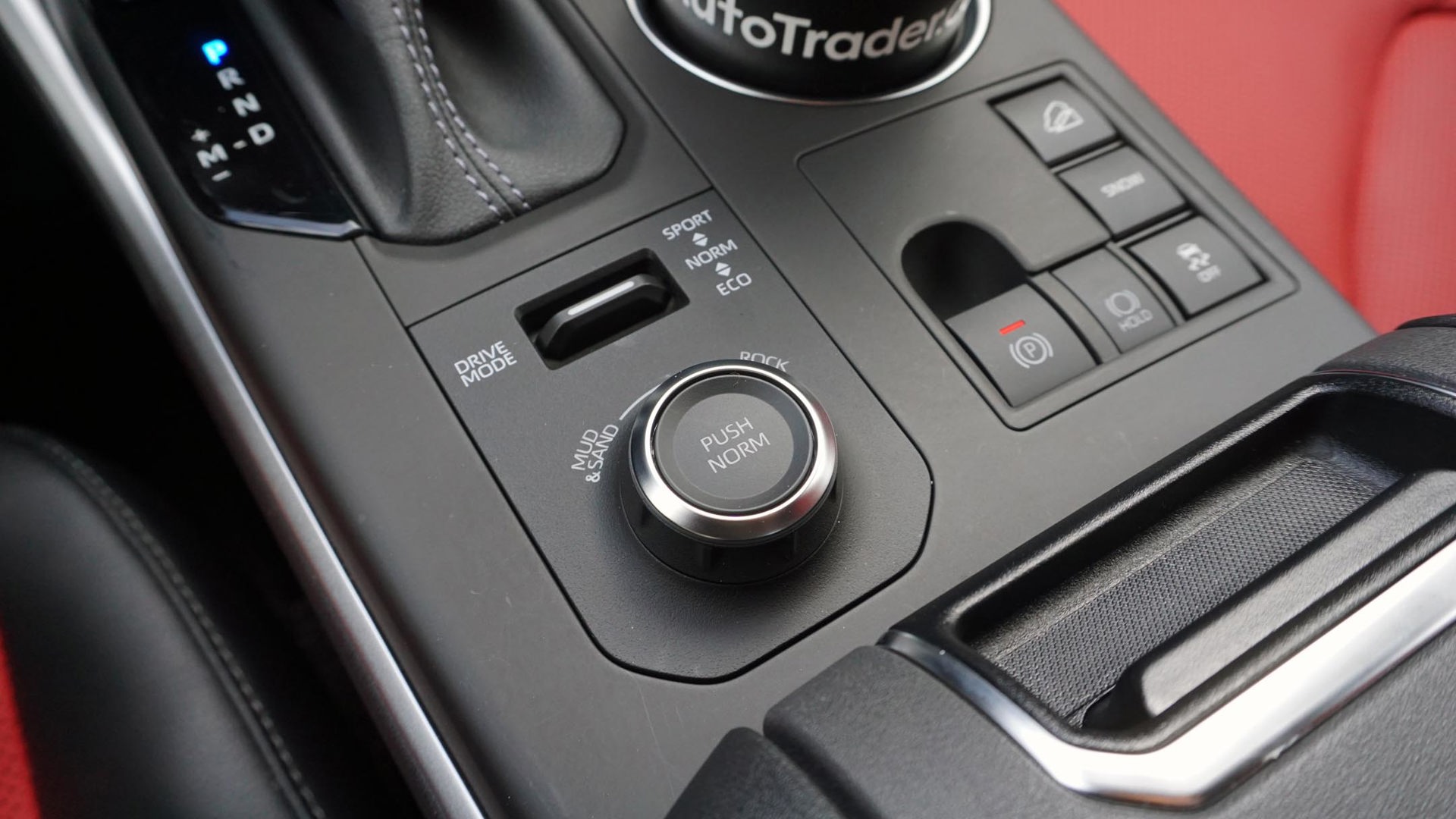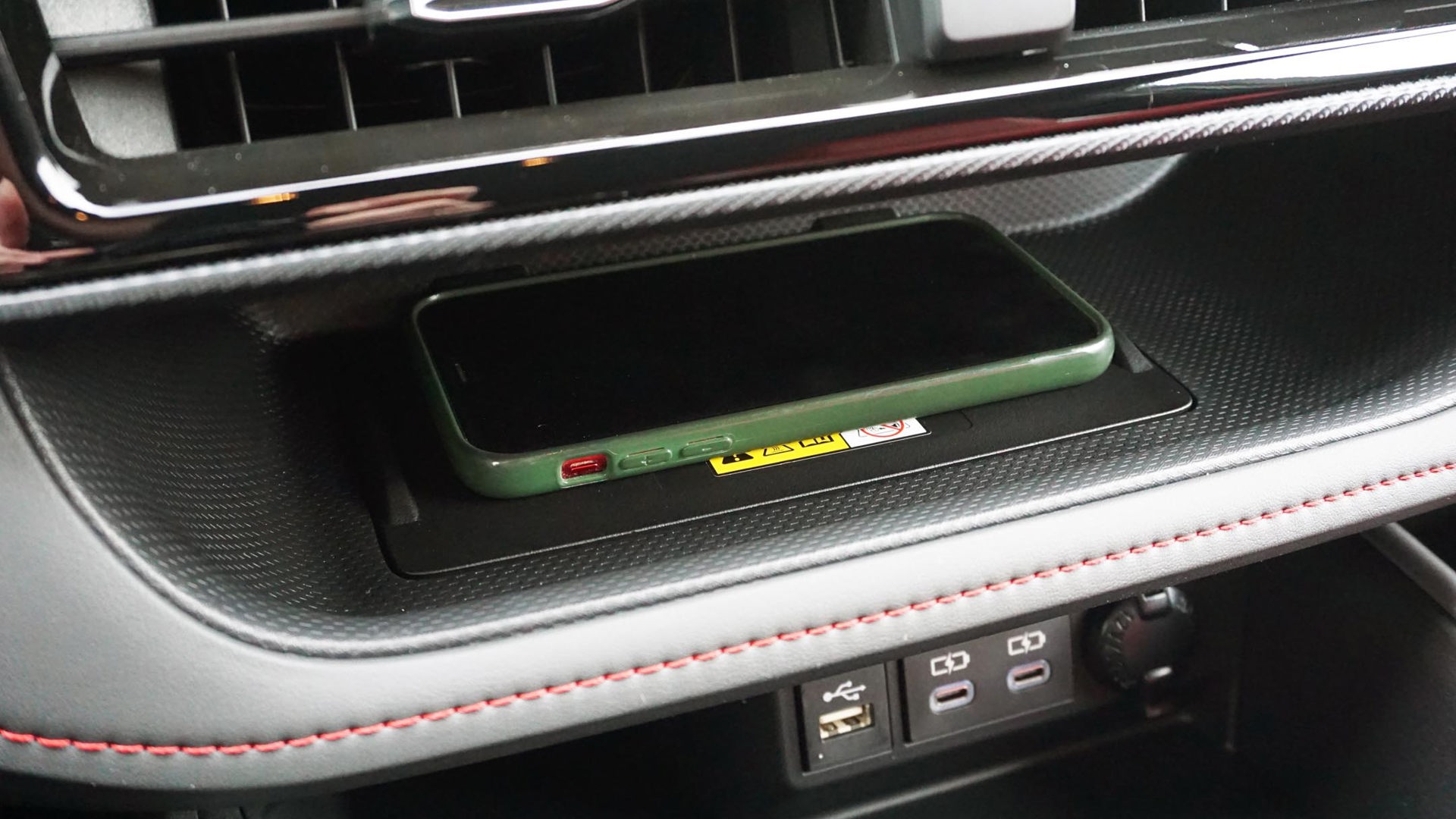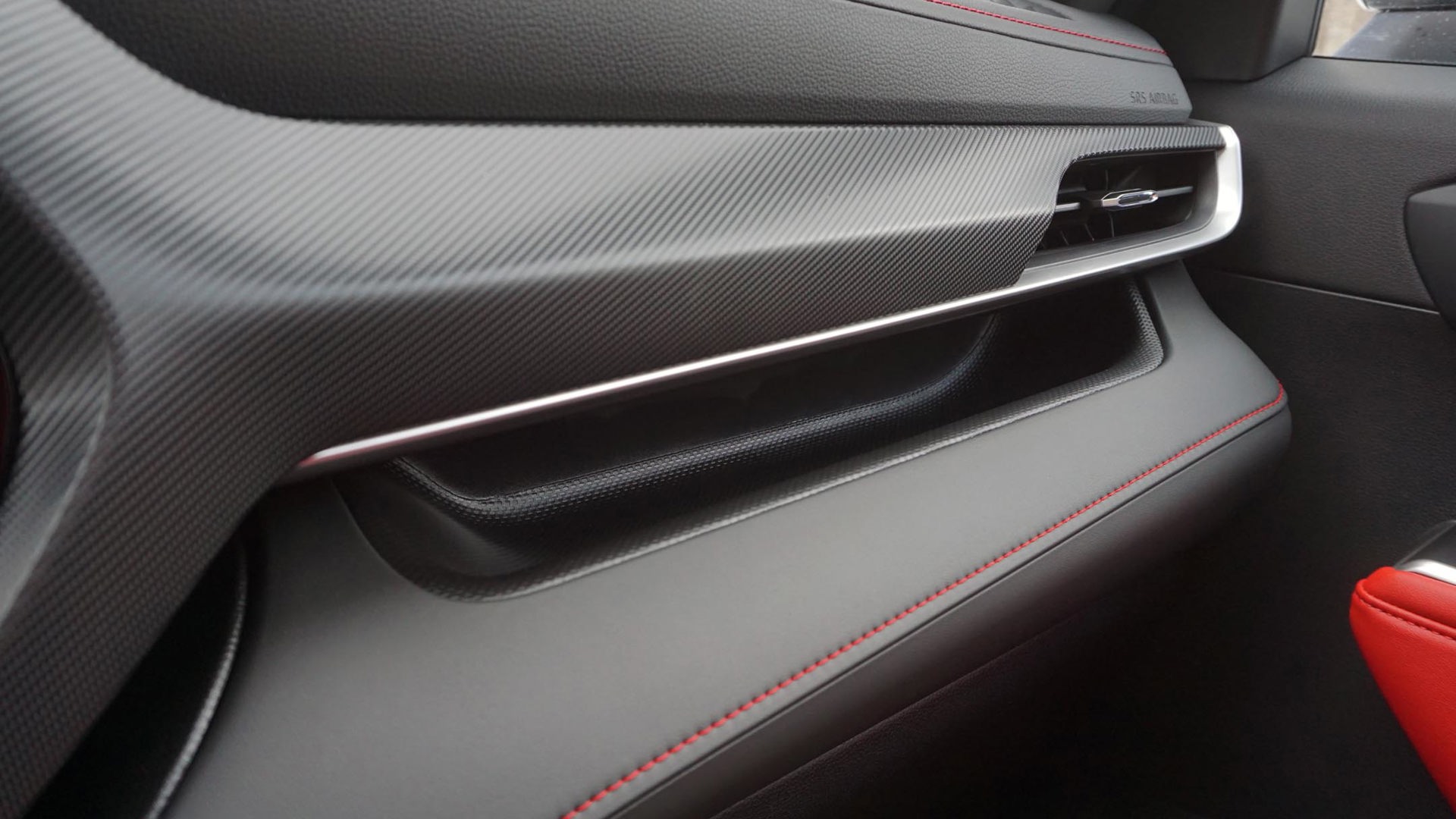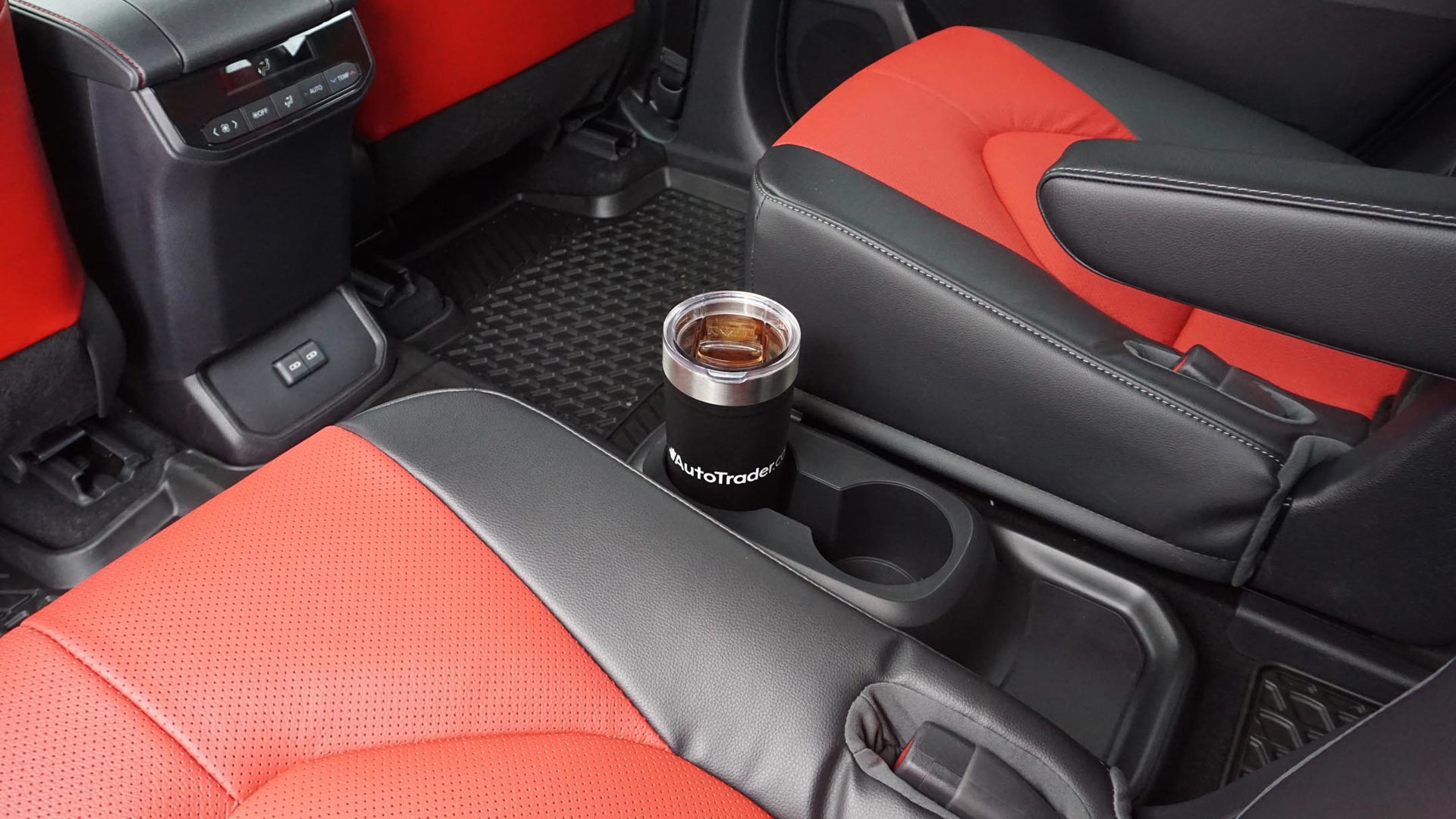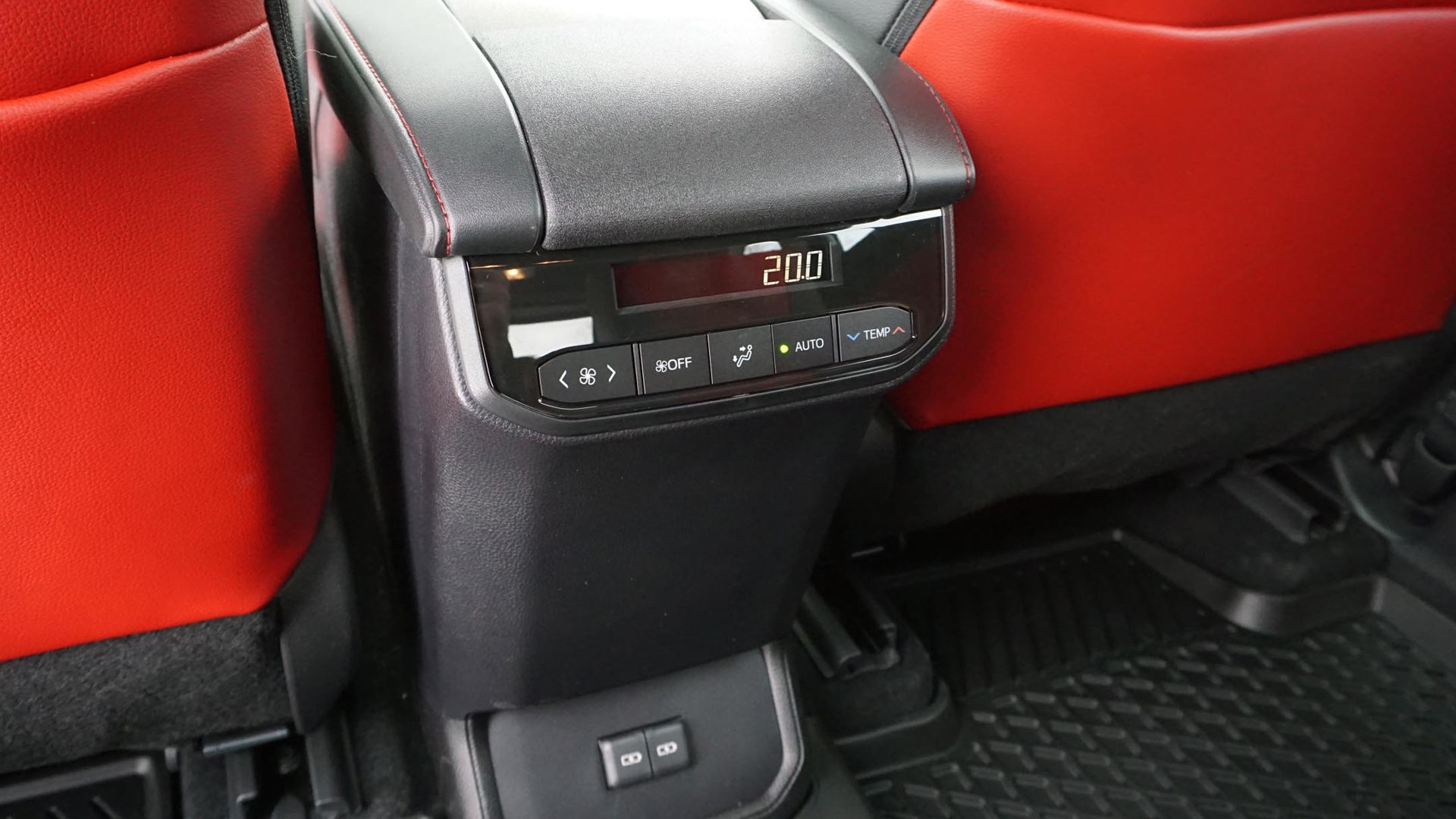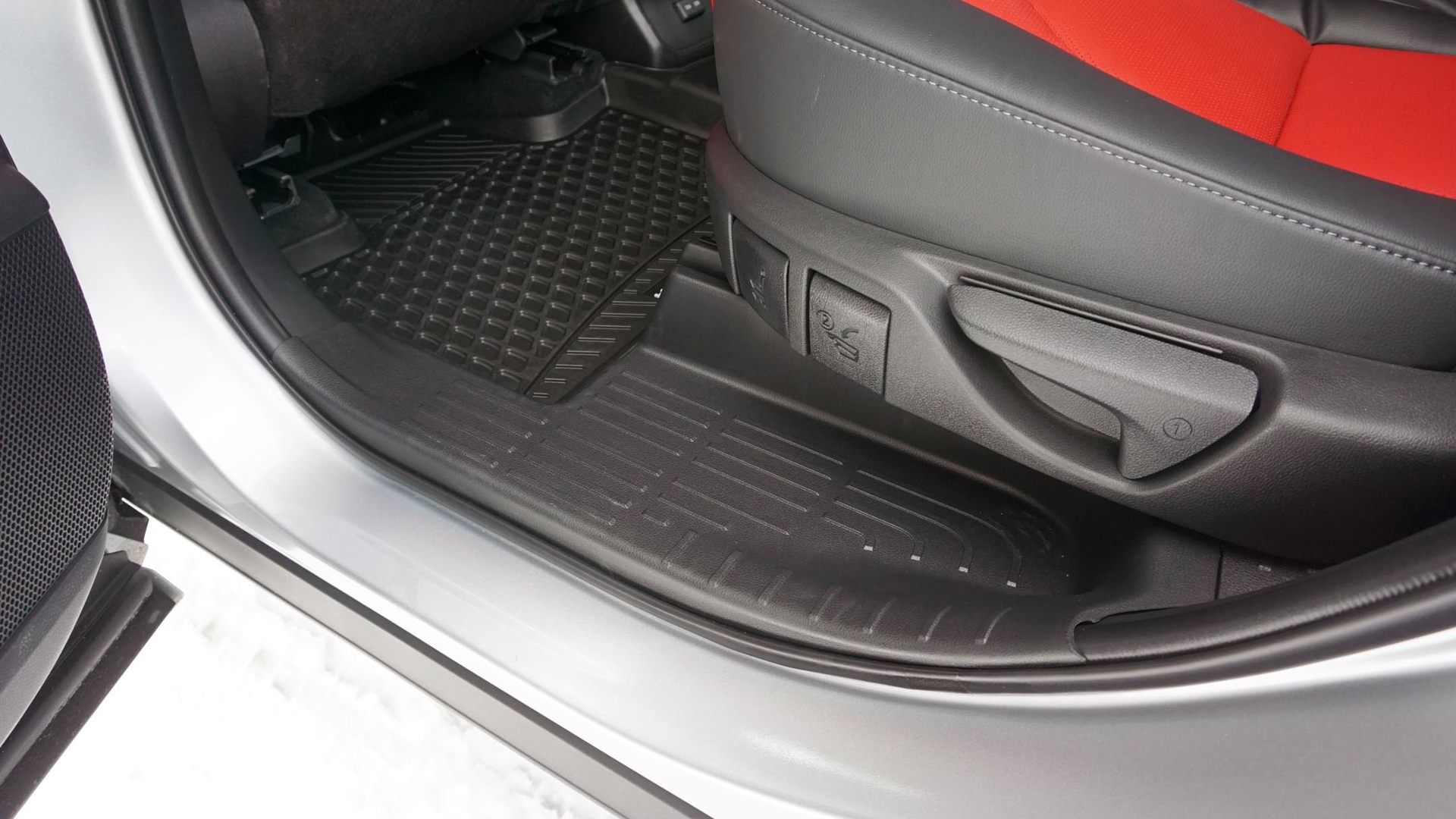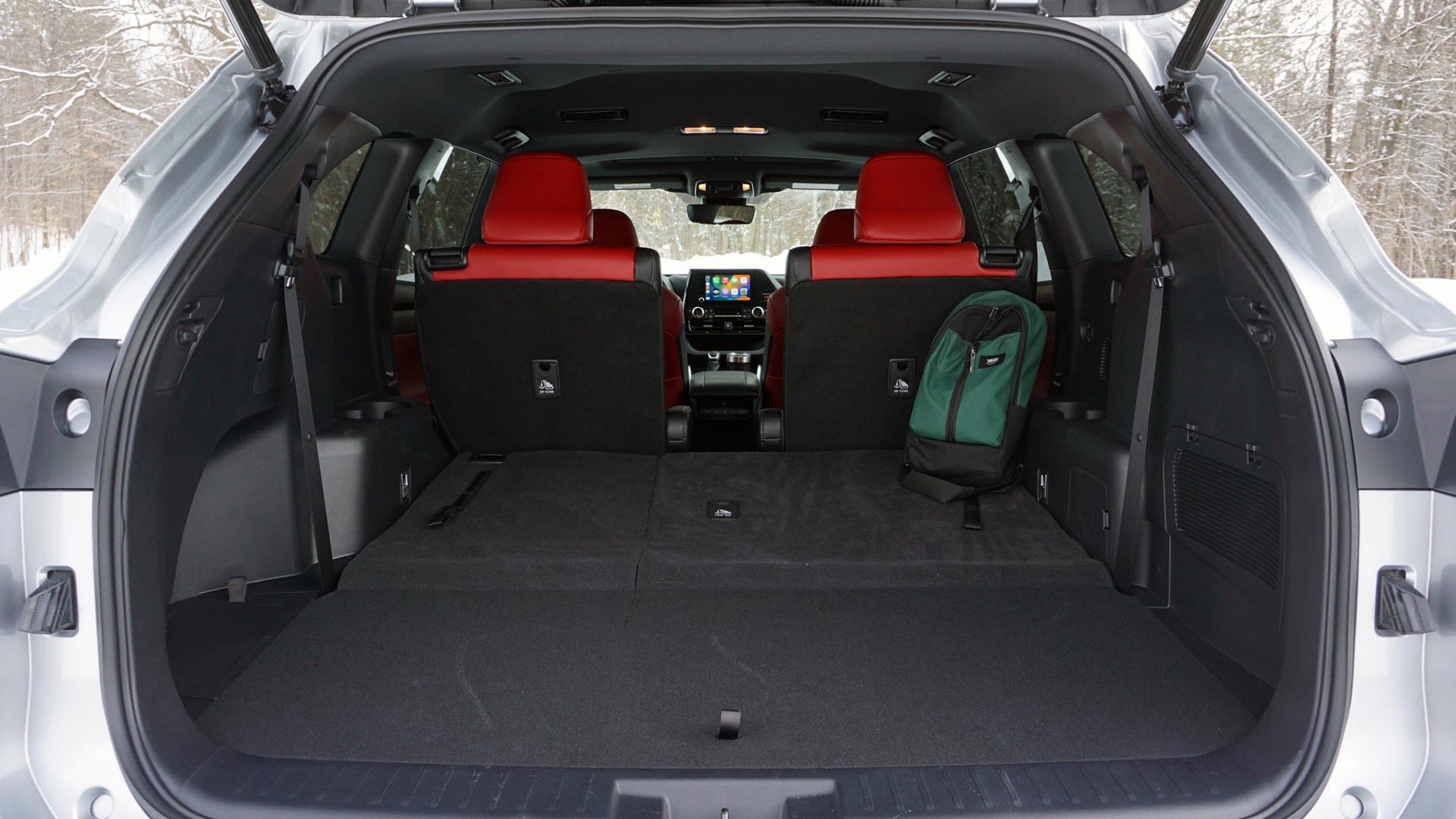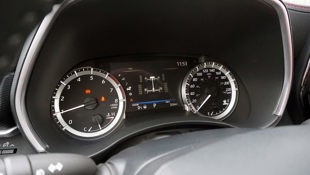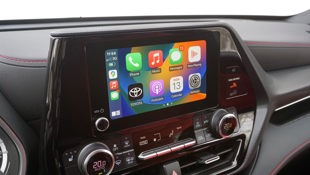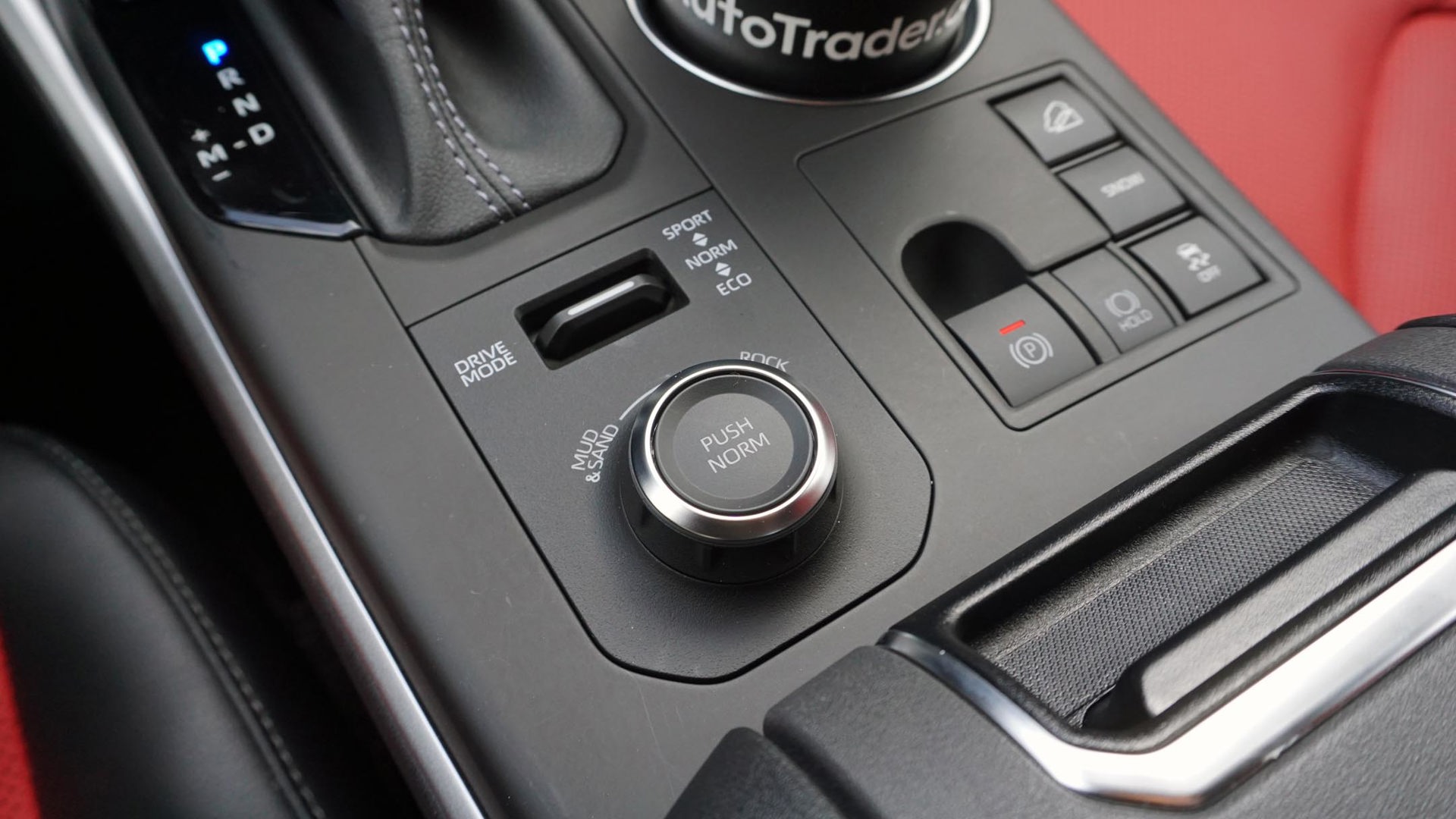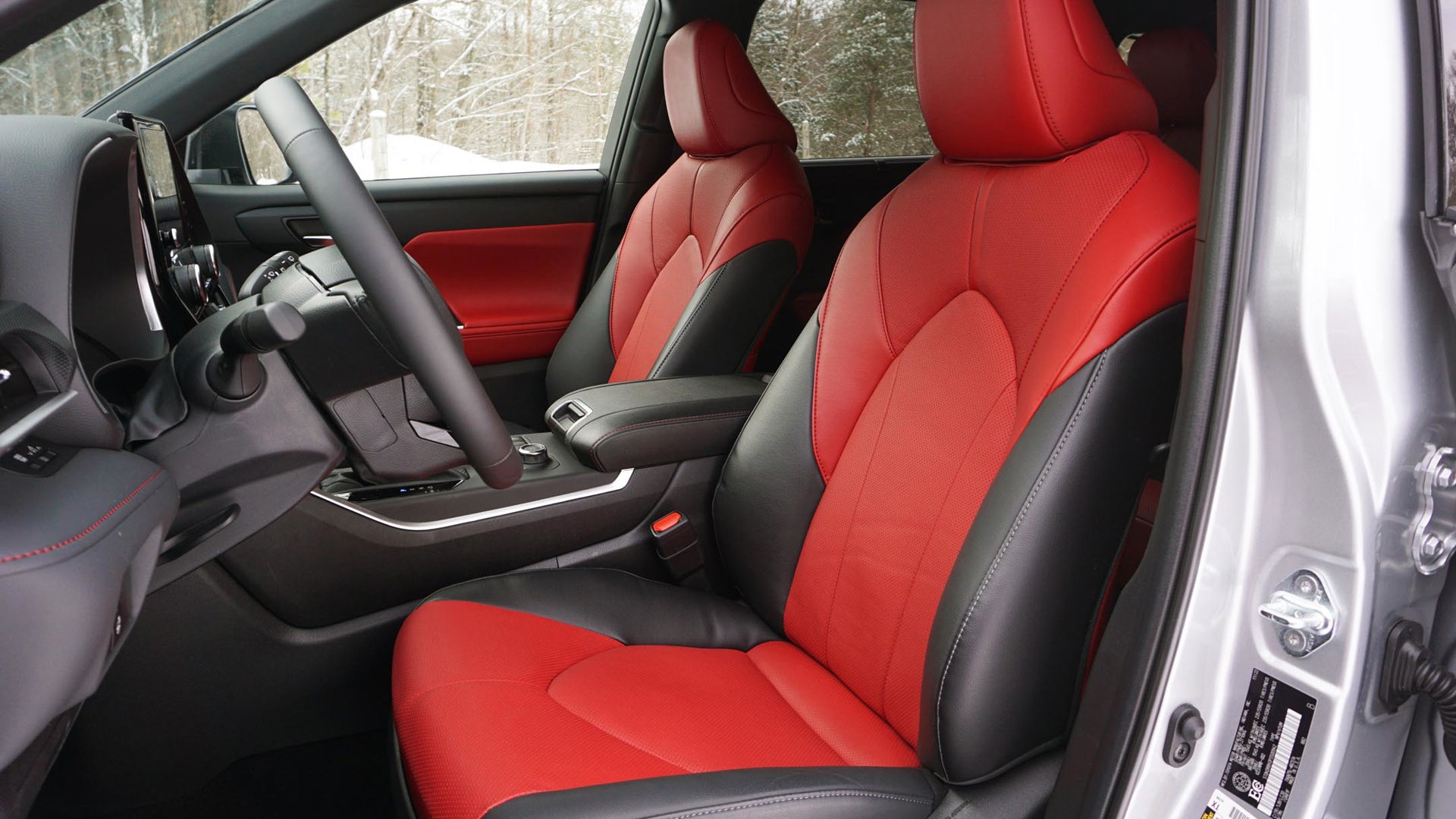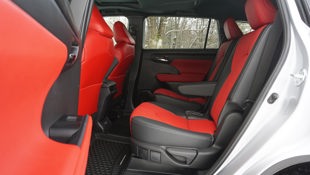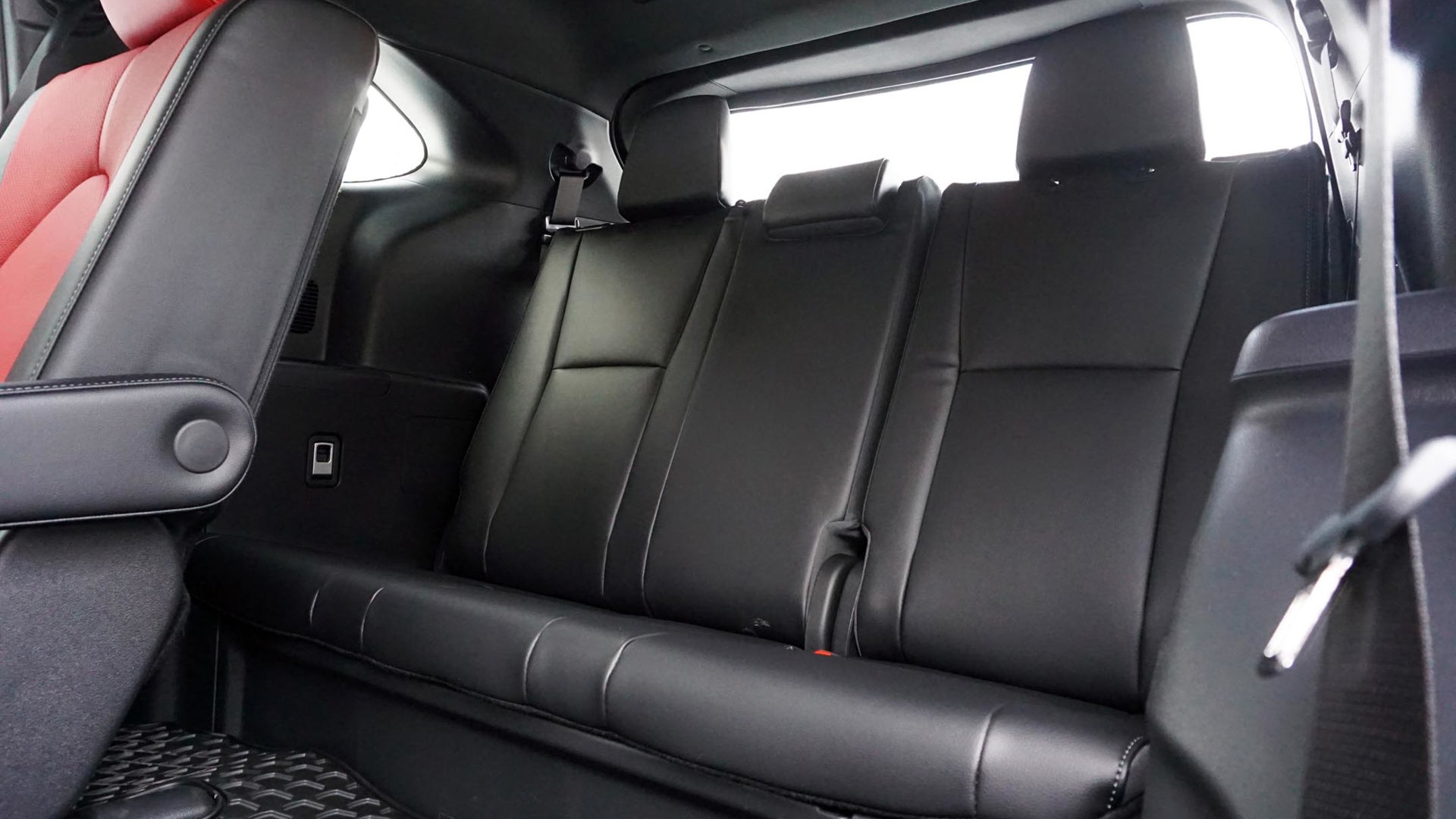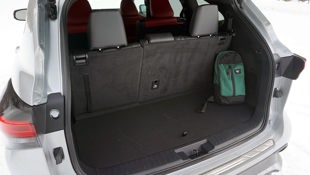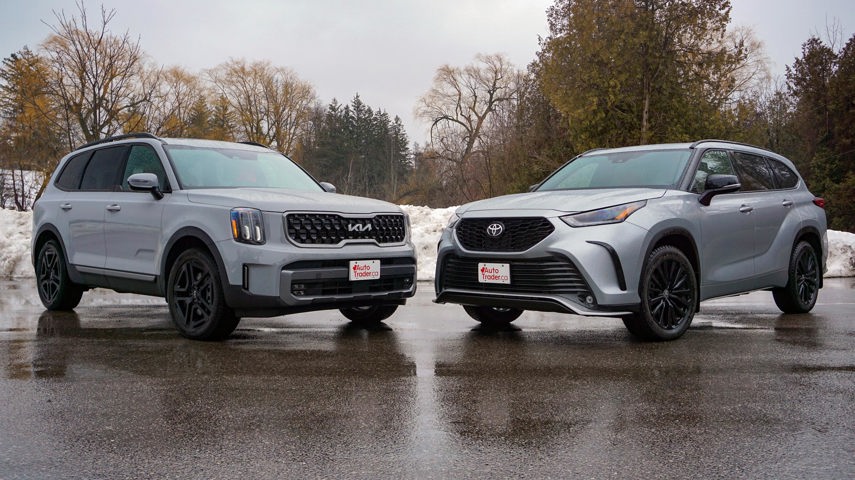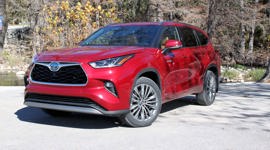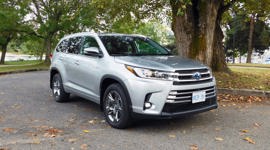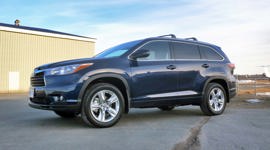 AutoTrader SCORE
AutoTrader SCORE
-
STYLING9/10
-
Safety8/10
-
PRACTICALITY7/10
-
USER-FRIENDLINESS8/10
-
FEATURES6/10
-
POWER8/10
-
COMFORT7/10
-
DRIVING FEEL6/10
-
FUEL ECONOMY7/10
-
VALUE7/10
With a new SUV on its way that borrows at least the essence of this one’s name, I’d like to take this opportunity to get out in front of those forthcoming reviews and remind you all that when it comes to the Highlander there can only be one.
Now, Toyota has said since announcing the upcoming Grand Highlander that this slightly smaller version isn’t going anywhere – at least not for the foreseeable future. In the meantime, the 2023 Toyota Highlander gets a downsized engine as well as a tweaked infotainment system in order to stay relevant in this highly competitive segment. And while it lacks the interior space of some of its rivals – hence the bigger version that’s coming – there’s still plenty to like about this segment-leading sport utility.
Power: 8/10
With automakers forced to find ways to reduce their fleet emissions averages, it’s engines like the Highlander’s V6 of old that are being replaced with smaller turbocharged ones like this new 2.4L. Yes, it’s a four-cylinder, and its 264 hp is down from the old engine’s 295; but it’s got some guts, with a hearty 310 lb-ft of torque on tap. That’s 17 per cent more than before, and it’s the stuff that matters when accelerating. It’s noticeable, too, with a newfound sense of urgency when pulling away from a stop or passing on the highway.
Coupled with an eight-speed automatic transmission that’s quick to downshift in response to deep presses of the pedal, the Highlander can get up and go when it needs to. It also boasts a standard all-wheel drive system that’s effective at shuffling torque around to the wheels that can use it most effectively. And while there’s no way to manually override the torque split, drive modes including a dedicated setting for snow will optimize the drivetrain for such conditions.
Fuel Economy: 7/10
The switch to a smaller engine is more of an emissions reduction measure than it is a matter of efficiency. Need proof? Consider the annual estimated fuel cost published by Natural Resources Canada (NRCan) that’s just $100 less with the new four-cylinder than it was last year. Instead, it’s the reduced smog rating that led us here; the 2.4L rates at a seven out of 10 on the government’s scale compared to the old engine’s five.
Even so, it takes little effort to overachieve compared to the Highlander’s official ratings. According to NRCan, the 2023 Highlander is rated to burn 11.0 L/100 km in the city, 8.4 on the highway, and 9.9 combined. That’s only slightly better across the board than last year, when it came in at 11.8 around town, 8.6 on the open road, and a combined 10.4. But then a roughly 215-km evaluation drive to start this test finishing at 9.1 L/100 km. And while my full week registered higher, coming in at 10.2 L/100 km over a little more than 500 km, that still makes this one of the most efficient entries in the segment.
Comfort: 7/10
If there’s a knock against the new engine it’s that it doesn’t sound especially refined when accelerating – a common trait of turbo four-cylinders powering such big and heavy vehicles. Audible issues continue at cruising speed, with the door mirrors generating quite a bit of wind noise, while the back half of the cabin isn’t as quiet as it could – or should – be. Otherwise, the Highlander is a smooth and satisfying sport utility, even with this XSE trim’s sport-tuned suspension.
While the rebound strokes are shorter than they would be with a more conventional setup, ride quality is excellent. Pressure cracks and potholes are a little more noticeable than they might be with a softer suspension tune, although it’s rarely enough to be disruptive and is just as likely a by-product of the big wheels and low-profile tires this XSE trim rides on than it is the fault of the shocks and springs.
Driving Feel: 6/10
If anything, it’s somewhat surprising that this Highlander in particular feels so top-heavy during cornering, with a bit more body roll than I expected considering that suspension. There’s also a serious lack of steering feel, although that’s fairly common amongst this subset of sport utilities (and there’s more of it than the Subaru Ascent offers). The bigger – and more bizarre – issue here is the brake pedal, which offers nothing remotely close to feedback relative to the amount of pressure applied. In fact, it can even be a little unnerving when bringing the Highlander to a halt in a hurry, with every single one of this XSE’s 1,996 kg (4,400 lb) felt underfoot – and little else.
Practicality: 7/10
Even with its downsized engine, the gas-powered Highlander is still rated to tow 2,268 kg (5,000 lb); the hybrid, meanwhile, is capped at 1,588 kg (3,500 lb) thanks to the extra weight of its electric motors and corresponding battery pack. Still, those who plan to pull a trailer with any frequency should note that smaller engines need to work harder to keep that extra weight moving, which means one of the segment’s remaining V6-powered options might work better. Take the Nissan Pathfinder, for example, that can pull as much as 2,722 kg (6,000 lb).
Likewise, there are others out there that make better use of their third-row seats than the Highlander. It’s not just legroom that’s the issue, either; the second row is mounted on rails so the available space can be split up accordingly. No, it’s the way the bench back there is bolted almost directly to the floor that will have even the youngest occupants feeling cramped. (Again, the Pathfinder does much better here.)
Beyond the usability of that back set of seats, cargo room is fairly standard for the segment, with 453 L behind it and 1,371 L with it folded. Again, there are others in the segment that do better, but there’s nothing inherently wrong with what the Highlander has to offer – with one exception: the power tailgate that’s standard on all but the cheapest trim might be the slowest around. Folding the 60/40 split-folding third row also requires reaching in and pulling handles on the seats themselves, while stowing the second row can’t be done from the cargo area – a feature offered in rivals like the Kia Telluride.
User-Friendliness: 8/10
Despite being a three-row SUV, there’s a coziness to this Toyota – not that it feels small when sitting in the first- or second-row seats, but rather that there’s an intimacy to the cabin. That’s not just a warm and fuzzy touch, either; it makes outward visibility a true highlight, with excellent views in all directions. Finding a proper seating position is easy (the eight-way power-adjustable driver’s seat that’s standard certainly helps), while the use of high-strength steel means the A-pillars that frame the windshield are thinner than they are with some rivals.
The front half of the cabin is also filled with clever cubbies and shelves for stashing the kind of everyday items you might carry with you – wallets, phones, hand sanitizer – while the climate controls are made up of big buttons, dials, and toggles for straightforward operation. Ditto the switchgear on the steering wheel that’s easy to read and understand.
Other than the engine, the other big change this year is the infotainment system, which has been updated to reflect Toyota’s latest efforts. The interface itself is simple, while the subscription-based navigation system is almost enough to make Google Maps obsolete (or Apple Maps, if you’re a masochist), although I personally appreciate the smartphone integration – and it’s free to use. Both Apple CarPlay and Android Auto connections are wireless, although the former was plagued by problems during this test that were no fault of Toyota’s, including ongoing voice recognition issues and bizarre Google Maps operation.
Features: 6/10
The only other issue with the infotainment system is more indicative of just how much the auto industry has changed in such a short time, with this tester’s eight-inch touchscreen looking rather small in an era when 12- and 14-inch displays are increasingly common. And in fairness, a 12.3-inch screen is available in the Highlander, but it’s reserved for the Limited and Platinum versions at the top of the lineup.
More generally, there aren’t a ton of creature comforts in this mid-grade Highlander XSE. The front seats are heated, and so is the steering wheel, but that’s where those features end; front-seat ventilation is reserved for those same range-topping trims, while second-row heat only comes with the priciest Platinum package. There is, however, tri-zone automatic climate control, a powered sunroof (though not a panoramic one), those smartphone connections, and subscription-based navigation and satellite radio.
Styling: 9/10
Outside of its limited feature set, the Highlander XSE has been dolled up with sport-inspired styling elements inside and out. We’re not always going to see eye-to-eye when it comes to styling – at least not all of us – but I happen to think the fourth-generation Highlander is still one of the best-looking entries in the segment, although the rest of the lineup is more to my taste. It’s not that this one doesn’t look good, however, and it wears its proportions well.
Ultimately, it’s the inside that does it for me with the XSE, with this tester’s red upholstery adding a uniqueness that’s hard to find in the segment. Even opting for black keeps the cool-factor high, with striped centre sections on the upper and lower cushions. The only disappointment either way is the boring third-row bench that’s finished in plain black and doesn’t match the rest of the cabin.
Safety: 8.5/10
Advanced safety and driver-assist features are where the Highlander hits the mark and then some, with even the cheapest trim outfitted with just about everything Toyota has to offer. Notable exceptions include blind-spot monitoring with rear cross-traffic alert, which is missing from the base version, while only the Limited and Platinum versions get low-speed reverse automatic emergency braking; but everything from forward collision warning with pedestrian and cyclist detection to automatic emergency braking up front, lane departure warning and keeping assistance, and adaptive cruise control that works in stop-and-go traffic is included across the lineup.
New for this year is the addition of so-called intersection support that can warn of oncoming traffic when making a left turn. The 2023 Highlander also retains its Top Safety Pick+ rating from the not-for-profit Insurance Institute for Highway Safety (IIHS) in spite of more stringent testing that has seen some competitors lose their ratings.
Value: 7/10
With the Kia Telluride and its corporate cousin, the Hyundai Palisade, moving a step or two upmarket in terms of packaging and pricing, the Highlander represents reasonable value in a segment that’s fairly expensive to begin with. The entry-level LE has a pre-tax starting price of $47,580 including a non-negotiable freight charge of $1,930, while the XLE is $50,280. Meanwhile, the Highlander XSE tested here lands in the middle of the gas-powered lineup with its asking price of $52,580, followed by the Limited and Platinum versions that are $55,820 and $57,690, respectively. Then there’s the hybrid powertrain that can be had with all but the XSE trim for anywhere from $2,500 to $2,755 more.
Pricing for the Palisade ranges from $49,974 to $58,774 across its three-trim lineup, while the Telluride is more expensive still, with a starting price of $52,744 before tax. That means there are three Highlander trims to choose from before getting to that price point. The four-cylinder Subaru Ascent is the value pick of the segment, with pre-tax pricing between $42,990 and $55,990.
The Verdict
Only you’ll know whether this not-so-grand Highlander makes sense for your family or if you’re going to need more space, but I can see it working for a family of four with the occasional need for an extra set of seats – say, shuttling some extra kids to soccer practice or hosting annual visits from the in-laws. If that doesn’t describe you, the Grand Highlander will be here soon, while there are others out there already like the Nissan Pathfinder and Kia Telluride that have more spacious third-row seats.
But there are more than a few reasons the Highlander has become one of the best-selling SUVs of its kind, starting with Toyota’s well-earned reputation for reliability and safety. There’s even some bang for your buck here, too, which helps to sweeten the deal. The new engine and infotainment aren’t exactly revolutionary – they just keep the 2023 Toyota Highlander chugging along as a solid pick in an increasingly competitive segment.
| Engine Displacement | 2.4L |
|---|---|
| Engine Cylinders | Turbo I4 |
| Peak Horsepower | 265 hp @ 6,000 rpm |
| Peak Torque | 310 lb-ft @ 1,700–3,600 rpm |
| Fuel Economy | 11.0 / 8.4 / 9.9 L/100 km cty/hwy/cmb |
| Cargo Space | 453 / 1,371 / 2,387 L behind 3rd/2nd/1st row |
| Model Tested | 2023 Toyota Highlander XSE |
| Base Price | $50,650 |
| A/C Tax | $100 |
| Destination Fee | $1,930 |
| Price as Tested | $52,680 |
|
Optional Equipment
None
|
|

